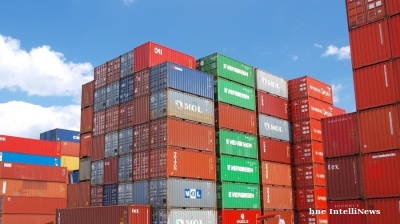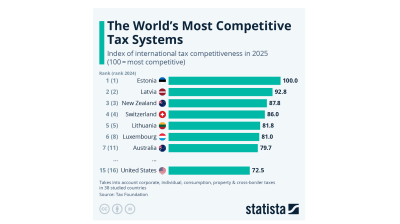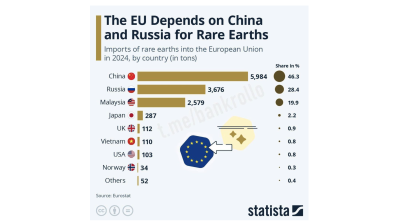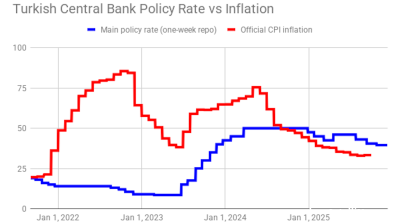In July, Russian President Vladimir Putin’s approval rating was 82%, according to the last available Levada centre poll.
Despite the speculation that the Russians might rise up and rebel following the start of the war in Ukraine, Russian President Vladimir Putin’s popularity remains higher than ever according to Levada.
Putin’s popularity had been hovering in the mid- to high-60s for much of the pandemic years, falling to a one-time low of 53 points in April 2020 when the first lockdowns were introduced before recovering to 66 in August that year.
However, following the invasion of Ukraine his popularity leaped over 10 points to 83 in March 2022 and has remained at between 81 and 83 points throughout the duration of the war, with the exception of September to November when it fell to 77-79 following Ukraine’s successful Kharkiv counter-offensive.
Prime Minister Mikhail Mishustin has also enjoyed a bump in popularity, with his approval rating rising from the mid-50s pre-war to 69-71% since the start of this year. His approval was slightly down to 69% in July.
Mishustin’s government has also been lifted from around 50% approval pre-war to 67% in July and has consistently polled at 67-69% all year.
Russia’s regional governors are even more popular, as they have in the last ten years become more effective and have concerned themselves with dealing with the immediate needs of their constituents. Region governors received consistent ratings of between the high-50s to low-60s pre-war that rose to 69% following the start of the war and have stayed at 69-74 in since. In July their approval fell slightly to a still high 72%.
The Duma remains the most unpopular institution in Russia but even that has had a boost from the nationalist rhetoric and heavy-handed propaganda. Pre-war the majority of Russian disapproved of the Duma with a roughly 40%/50% approve/disapprove split.
However, that ratio flipped in March 2022 to a 59/36 approval/disapproval as the majority of Russians approved of the Duma and its actions. Since then the overall majority of Russians still approve of the Duma with the rate varying at 54-59, and the split was 57/35 approve/disapprove in July, the last data available, with the remainder expressing no view.
The surge in nationalism is also visible in Levada’s “which direction is the country going in?” poll. Pre-war around 50% of respondents thought the country was going in the “right” direction, with roughly 44% believing it was going in the “wrong” direction and the remainder having no opinion.
However, following the start of the war the number of respondents saying Russia was going in the “right” direction jumped to 69% in March 2022 and wrong fell to 22%.
Since then respondents have very consistently polled at 67-68% for the right direction, with a few aberrations, such as the months of the Kharkiv offensive disaster for Russia.
Those that think Russia is going in the wrong direction are consistently down 20 percentage points at around 22% compared to the pre-war period, while the “don’t know” category has remained the same, circa 10% for both pre-war and post-start of the war periods.
As for the propensity to protest with political demands, this has roughly halved between the pre- and post-start of the war periods. This metric is a little more volatile than the political approval results, but the propensity to protest with political demands has oscillated around 27-30% for most of the last five years, but it fell sharply in the first poll after the start of the war in May 2022 to 16% and was 17% in July.
Interestingly, the accompanying question of “could there be political protests and would you participate if there were?” has fallen even further. Pre-war the poll found somewhere between 19% and 29% said yes to this second question, but in May 2022 that fell to only 6%, its lowest level in years. Since then it has recovered to 15% in July, which is on par with many of the polls in the pre-war period.
The political protest questions suggest that immediately after the war started respondents were afraid to take to the streets because of the anticipated Kremlin crackdown. However, after the initial shock of the invasion wore off a small minority of around 15% remain opposed to the Putin regime and war has not added significantly to their numbers. The same people don’t like Putin now as didn’t like him before the war.
The propensity to protest with economic demands show almost identical patterns. Pre-war those that thought protests were possible numbered 25-30% with 21-29% saying they would participate if protests happened.
In the May 2022 poll that fell to 17% that thought protests could happen and 14% saying they would participate if they did. In July the same 17% said protests could happen but the number willing to participate has fallen to 10%.
Data

Ukraine's trade deficit doubles to $42bn putting new pressure on an already strained economy
Ukraine’s trade deficit has doubled to $42bn as exports fall and imports balloon. The balance of payments deficit is starting to turn into a serious problem that could undermine the country’s macroeconomic stability.

BYD surpasses Tesla to become EV market leader – Statista
While Chinese manufacturer BYD already pulled ahead of Tesla in production volume last year, with 1,777,965 battery electric vehicles (BEV) produced in 2024 (4,500 more than Tesla), the American manufacturer remained ahead in sales.

Estonia has the world’s most competitive tax systems for the 11th year in a row – STATISTA
The Tax Foundation has released its International Tax Competitiveness Index which highlights the most competitive tax rates in different countries around the world. For the 11th consecutive year, Estonia had the highest score in the index.

EU rare earth supply dominated by China and Russia - Eurostat
The European Union remains heavily dependent on China and Russia for rare earth imports, with nearly three-quarters of its supply sourced from the two countries in 2024, according to data published by Eurostat and reported by Statista.


